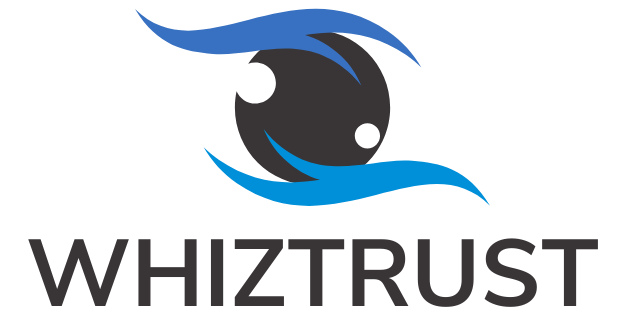In today’s fast-paced business world, relying on vendors is as common as finding a coffee shop on every corner. But with great partnerships come great risks. Enter vendor risk management software—the superhero of the supply chain. It swoops in to save the day, ensuring businesses stay protected from potential pitfalls while keeping their operations smooth and efficient.
Table of Contents
ToggleOverview of Vendor Risk Management Software
Vendor risk management software streamlines the identification and mitigation of risks associated with third-party vendors. This software acts as a vital resource for companies to safeguard their operations against potential vulnerabilities.
Definition and Purpose
Vendor risk management software refers to solutions designed to assess, monitor, and manage risks arising from third-party relationships. Such software enables organizations to evaluate vendor compliance with regulatory standards, security protocols, and contractual obligations. It provides tools for continuous monitoring, helping businesses track vendor performance and incidents. The ultimate purpose lies in maintaining operational integrity and reducing exposure to risks, including data breaches and financial loss.
Importance in Business Operations
Vendor risk management software plays a critical role in enhancing business operations. Effective management of vendor relationships leads to improved compliance with laws and regulations, minimizing legal risks. Organizations can reduce operational disruptions by identifying potential vulnerabilities early. Additionally, software fosters clear communication between companies and their vendors, ensuring alignment on expectations and responsibilities. Robust vendor vetting processes contribute to better decision-making, ultimately supporting overall business resilience and growth.
Key Features of Vendor Risk Management Software

Vendor risk management software includes essential features that streamline the monitoring and management of vendor relationships, ensuring that organizations effectively mitigate potential risks.
Risk Assessment Tools
Risk assessment tools enable organizations to identify vulnerabilities within their vendor relationships. These tools often involve automated questionnaires that assess various risk factors, such as financial stability and cybersecurity measures. Depending on the vendor’s responses, organizations can determine the level of risk associated with each relationship. Additionally, some software includes risk scoring systems that prioritize vendors based on their risk levels. This prioritization helps teams focus on critical vendors requiring immediate attention and intervention.
Compliance Tracking
Compliance tracking features keep organizations aligned with regulatory requirements. They facilitate continuous monitoring of vendor compliance with industry standards and internal policies. Automated alerts inform businesses about any compliance breaches or upcoming audit requirements. Organizations can utilize dashboards to visualize compliance statuses across various vendors, simplifying oversight. Also, these tools often store documentation related to compliance, which aids in audits and reporting. By centralizing compliance efforts, organizations can enhance their operational integrity.
Vendor Performance Monitoring
Vendor performance monitoring allows organizations to evaluate vendor effectiveness over time. Organizations can track key performance indicators such as service delivery, quality, and response times. Regular assessments ensure that vendors meet contractual obligations while providing necessary services. This continuous monitoring can pinpoint areas needing improvement and facilitate productive conversations between organizations and their vendors. By maintaining up-to-date performance data, businesses foster stronger partnerships and can make informed decisions about contract renewals or terminations.
Benefits of Implementing Vendor Risk Management Software
Implementing vendor risk management software offers numerous advantages that strengthen organizational frameworks and minimize potential vulnerabilities.
Enhanced Security and Compliance
Improved security measures result from the integration of comprehensive risk assessments. Organizations can identify potential threats before they escalate by utilizing automated questionnaires. Compliance with regulatory standards becomes easier through ongoing monitoring of vendor activities. Alerts for breaches in compliance ensure prompt action is taken. Organizations benefit from detailed audit trails, which support transparency and accountability. Ultimately, enhanced security and compliance contribute to a more robust operational environment.
Improved Decision-Making
Data-driven insights significantly inform decision-making processes. The software analysis helps organizations evaluate vendor performance through risk scoring systems. Decision-makers benefit from real-time information about vendor compliance statuses, allowing them to make informed choices. Additionally, organizations can prioritize their vendor relationships based on risk assessment results. Using these insights enables teams to mitigate risks proactively and strategically align vendor relationships with business objectives.
Streamlined Processes
Automation of manual tasks leads to efficient management of vendor relationships. Processes such as risk assessments and compliance tracking become quicker and more accurate. Centralized data repositories facilitate easy access to vendor information, reducing administrative burdens. Teams can focus on strategic initiatives rather than spending time on repetitive tasks. Improved visibility into vendor performance fosters collaboration between organizations and their vendors. Consequently, streamlined processes enhance overall productivity and operational efficiency.
Selecting the Right Vendor Risk Management Software
Choosing the ideal vendor risk management software requires carefully assessing specific business requirements. Organizations gain a competitive edge by aligning software capabilities with operational goals.
Evaluating Your Business Needs
Prioritizing business needs establishes the foundation for effective vendor risk management. Begin by examining the types of vendors involved and the specific risks they present. Organizations focused on regulatory compliance must consider software that addresses pertinent regulations. Identifying existing pain points, such as communication gaps or data handling issues, enables targeted software selection. Evaluating existing risk management frameworks also highlights areas for improvement. Additionally, understanding the scale and complexity of vendor relationships helps determine necessary features and integration capabilities.
Key Criteria to Consider
Focusing on essential criteria leads to informed decision-making when selecting software. Look for robust risk assessment tools that provide automated questionnaires, as these streamline the identification of vulnerabilities. Compliance tracking functionalities ensure adherence to regulatory standards, while performance monitoring evaluates vendor effectiveness. Consider scalability to accommodate business growth and flexibility for future integrations with existing systems. User-friendly interfaces improve adoption rates across teams, promoting efficient collaboration. Lastly, strong customer support enhances the software experience, ensuring that organizations can efficiently address any challenges that arise.
Vendor risk management software is essential for organizations navigating the complexities of third-party relationships. By streamlining risk assessment and compliance tracking, it empowers businesses to make informed decisions that enhance operational integrity. The right software not only mitigates potential risks but also fosters stronger partnerships and improved communication with vendors. As businesses increasingly rely on external partners, investing in robust vendor risk management solutions becomes a strategic move that supports resilience and growth. Prioritizing the right features ensures that organizations can effectively manage vendor relationships and maintain a competitive edge in their industries.


